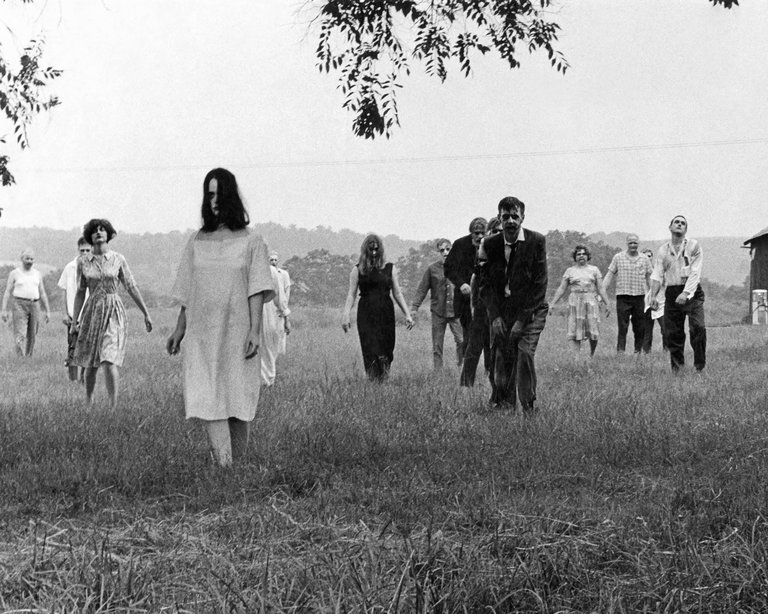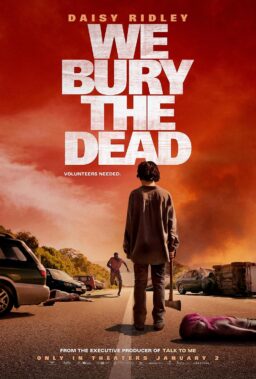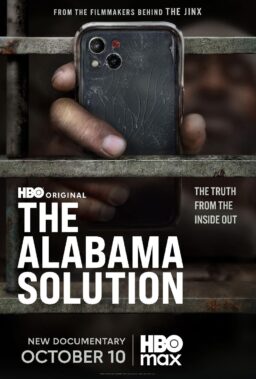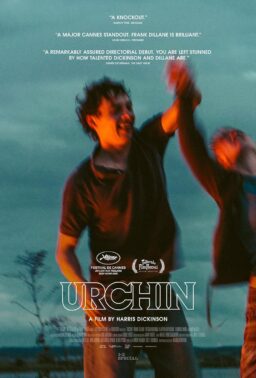1.
“Guess What’s Back From the Grave? ‘Night of the Living Dead’“: An essential Halloween read from our own Glenn Kenny at The New York Times.
“When ‘Night of the Living Dead’ opened in 1968, mostly in grindhouse theaters, Vincent Canby of The New York Times dismissed it in a three-sentence review as ‘a grainy little movie acted by what appear to be nonprofessional actors, who are besieged in a farmhouse by some other nonprofessional actors who stagger around, stiff-legged, pretending to be flesh-eating ghouls.’ He said the filmmakers were ‘some people in Pittsburgh.’ As it happened, “Living Dead” followed a trajectory rare in American film: Partly fueled by other, more scandalized reviews (including one by a young Roger Ebert, in Reader’s Digest), it went on to cult success, and two years later was recognized as being sufficiently artful to be placed in the permanent collection of the Museum of Modern Art. Its influence, particularly on the now nearly ubiquitous subgenre of zombie horror (‘The Walking Dead’ on TV, and the movies ’28 Days Later,’ ‘World War Z’ and ‘Shaun of the Dead’) is broadly recognized. But the filmmakers themselves — the ‘people from Pittsburgh’ who formed a company they called Image Ten to make the low-budget movie — have been able to gain from their groundbreaking work only in a limited way. The film’s original distributor, the Walter Reade Organization (named for its founder, a pioneer of art-house distribution), did not file for a new copyright after changing the title from the original ‘Night of the Flesh Eaters’ to ‘Night of the Living Dead.’ That meant the movie went into the public domain almost immediately. As was once the case with Frank Capra’s ‘It’s a Wonderful Life,’ the movie has been subjected to many unofficial, though legal, iterations.”
2.

“Towards a New Black Masculinity: Obama, Luke Cage, Nate Parker and Chiron“: A great essay from Brandon Wilson at Geniusbastard.
“Parker famously said he refused to play a gay man because ‘I refuse to allow any piece of work to emasculate me for very specific reasons’ and ‘to preserve the Black man…you will never see me take a gay role.’ Nat Turner took an eclipse as a divine signal to lead his rebellion and Nate Parker should similarly view the auspicious arrival of ‘Moonlight’ as an omen to rethink his outdated homophobic nonsense. Directed by Barry Jenkins and based on an autobiographical play by Tarell McCraney, ‘Moonlight’ focuses on three moments in the life of Chiron, a Black gay boy growing up in Miami’s Liberty City. We see Chiron at turning point moments in childhood, adolescence and adulthood as he tries to come to terms with the abuse, homophobia and toxic masculinity he’s grown up with. The film has set records in its first weekend of release for per screen average (meaning even though it is only playing on a handful of screens it is making a ton of money). I saw it Friday night at a screening that had to be moved to the Cinerama Dome to accommodate the demand. ‘Moonlight,’ without a ton of paid ballyhoo from a studio, is the film Parker wanted ‘Birth of a Nation’ to be. It has comes to the screen with a sizable audience hungry for it, who have been waiting to see it for most of their lives. And ‘Moonlight ‘is revolutionary in ways that Birth of a Nation is not. We’ve seen Black men stand up and violently resist oppression. Not a lot, but we have seen it. But we’ve rarely seen a film about intimacy between Black men. We’ve rarely seen a film show how toxic masculinity can destroy Black men as quickly as racist oppression. We’ve rarely seen a film where the great act of masculine courage is not acting out violently, it is learning to feel worthy of love. What’s so striking about ‘Moonlight’ is that for the first half of the film, Chiron’s queerness is more or less beside the point. He could be straight and still suffer the same soul crushing oppression and emotional brutality and it would be no less deleterious. But he is gay and the film will force many to question what being gay looks like and what it means. Chiron responds to his oppression by fashioning himself into the very picture of Black masculinity. The actor who plays him as an adult looks every bit the superhero and could easily play Luke Cage or Black Panther. But that kind of manhood, the kind that Nate Parker seems to think is so precious and sacrosanct is not Chiron’s salvation. It is an imperfect solution that the culture he’s grown up in has led him towards.”
3.

“Terrence Malick Talks Filmmaking and His Future in Rare Live Appearance“: As reported by Eli F. at The Film Stage.
“The dialogue with Malick primarily covered two subjects: his thoughts on Rossellini’s picture [‘Journey to Italy’], and his thoughts on the current age of digital cinema. On the former, he expressed a longstanding admiration for its naturalism – it does not so much seem scripted, he says, as it does a matter of the camera, an invisible watcher, following Ingrid Bergman’s and George Sanders’ characters through an episodic series of encounters. He likened the revolutionary simplicity of Rossellini’s style and production to Jean-Luc Godard’s quip that all one really needs to make an interesting film is one man, one woman, and a car – these being quite literally ‘Journey to Italy’’s core ingredients. He also said that the sense of spontaneity captured has been an inspiration for his own work, including the famous tendency to capture moments of natural beauty on the spot and work them into the fold. Malick is also interested in its complex and ambiguous portrayal of a frayed marriage — one wrought by mutual alienation and habitual failure to communicate, leading to an unexpected resolution that has divided audiences for decades. Malick recalled his changing emotional responses over the years after first seeing Rossellini’s work as a student – and rarely since. He feels ‘Journey’’s thematic content is more relevant now than ever, even citing Sherry Turkle’s popular 2011 nonfiction book Alone Together as documentation of a new breed of alienation and emotional challenges unique to our age, as well as the perils of digital technology.”
4.

“John Candy Remembered: His Children Share New Stories About Their Late Father On The Eve Of His Birthday“: In conversation with The Hollywood Reporter‘s Ryan Parker.
“Candy died of a heart attack in Mexico on March 4, 1994, at the age of 43. Neither Jen nor Chris have any problem talking about that day and the immediate aftermath of their father’s death. They both say that discussing that time is cathartic for them. ‘I was 9. It was a Friday,’ Chris says. ‘I remember talking to him the night before he passed away and he said, ‘I love you and goodnight.’ And I will always remember that.’ Adds Jen, ‘I remember my dad the night before. I was studying for a vocabulary test. I was 14. He had just come home for my 14th birthday, which is Feb. 3. So I was talking to him on the phone, and, I hate this, but I was slightly distant because I was studying. So I was like, ‘Yeah, OK, I love you. I will talk to you later. Have a great night.’ Then I hang up, and I go back to studying.’ Both kids attended Friday mass at their school, St. Martin of Tours, after which they were pulled out of class by Father Donie. ‘They wouldn’t tell me what was going on,’ Jen says. Chris breaks in, ‘I have this one memory of seeing this kid in mass, and he is playing around, and I had this weird energy come over me where I was able to feel older. And then Father Donie walked us down to the rectory. Bob Crane, my dad’s assistant was there. Our mom was there, in tears.’ ‘And someone says, I don’t remember who, ‘Your dad has passed away,’’ Jen says. ‘And we just erupted into tears,’ Chris adds.”
5.

“Off the Boulevard of Broken Dreams: The Knickerbocker Hotel’s Haunted History“: An eerie stroll taken by KCET‘s Hadley Meares.
“Countless guests and residents at the hotel no doubt unknowingly walked by a lost looking, elegant old gentleman swinging his signature cane through the lobby. This man, who was in large part responsible for the birth of ‘Hollywood,’ was pioneering director D.W. Griffith. During the last year of his life, the forgotten, out of work Griffith lived an ‘exceedingly quiet life’ in his room at the Knickerbocker, spending most of his time alone with his books and papers. In the early evenings, Griffith would wander up and down Hollywood Boulevard unrecognized, often weaving in and out of multiple bars. Screenwriter Frances Marion recalled a heartbreaking scene at a handprint ceremony at Grauman’s Chinese Theater, when she spotted a bewildered, stooped Griffith ‘hovering at the edge of the crowd.’ Unbelievably, he had never been asked for his handprints. On July 23, 1948, he suffered a massive stroke in his room at the hotel. He died later that day. As the ’40s turned into the ’50s, Hollywood became less and less trendy, as celebrities and society moved increasingly toward west L.A. However, as the Knickerbocker’s cachet faded, it increasingly became an out of the way rendezvous spot for famous folks craving privacy. Ill-fated lovers Marilyn Monroe and Joe DiMaggio would often meet in the hotel bar for incognito dates. In January 1954, it is claimed they spent their honeymoon in the hotel. That same year, legendary architect Paul R. Williams oversaw the hotel’s renovation. Elvis Presley spent time in a newly renovated room in 1956, when producer Hal Wallace brought him to Hollywood to star in ‘Love Me Tender.’”
Image of the Day

Jeremy Carr delves into Krzysztof Kieślowski’s newly restored ‘Dekalog’ at Vague Visages.
Video of the Day
Leigh Lahav and Oren Mendez’s mash-up of “Stranger Things” and “A Charlie Brown Christmas,” entitled “Merry Christmas Will Byers,” is three minutes of satirical perfection.












